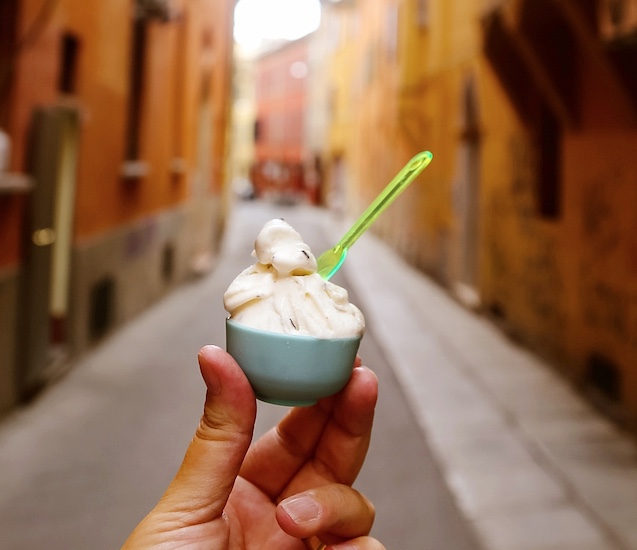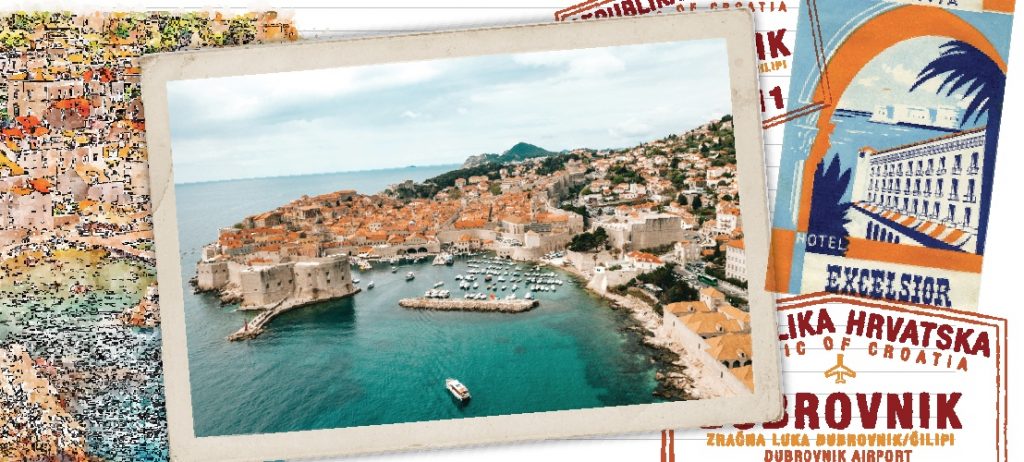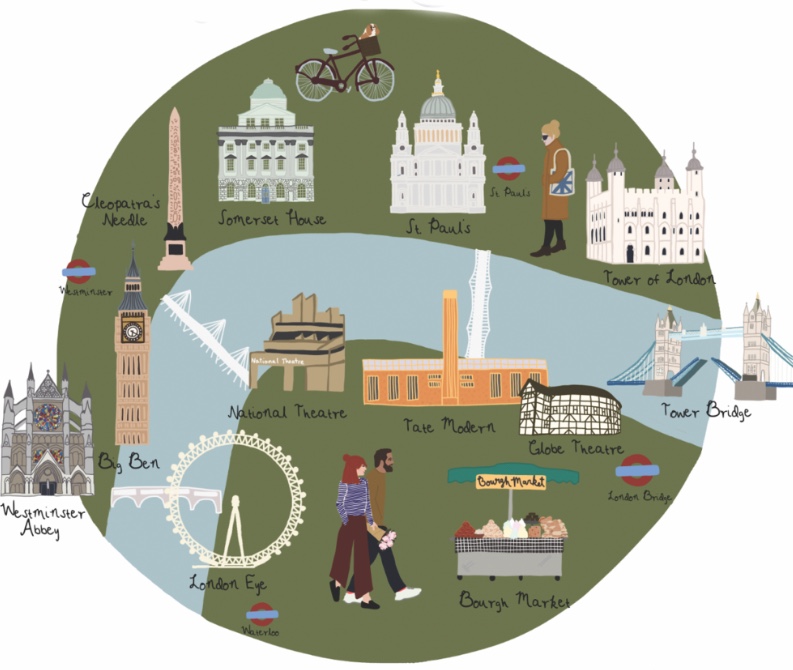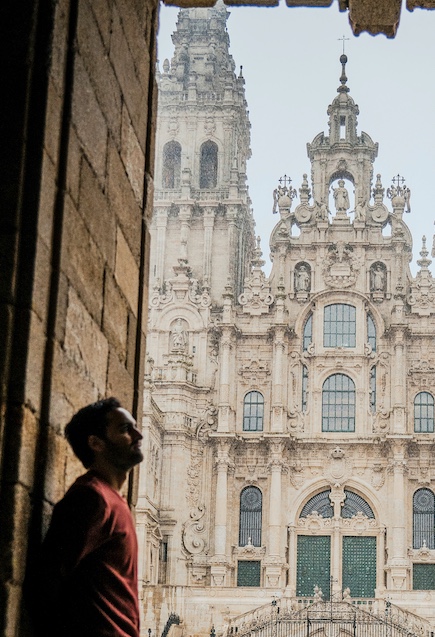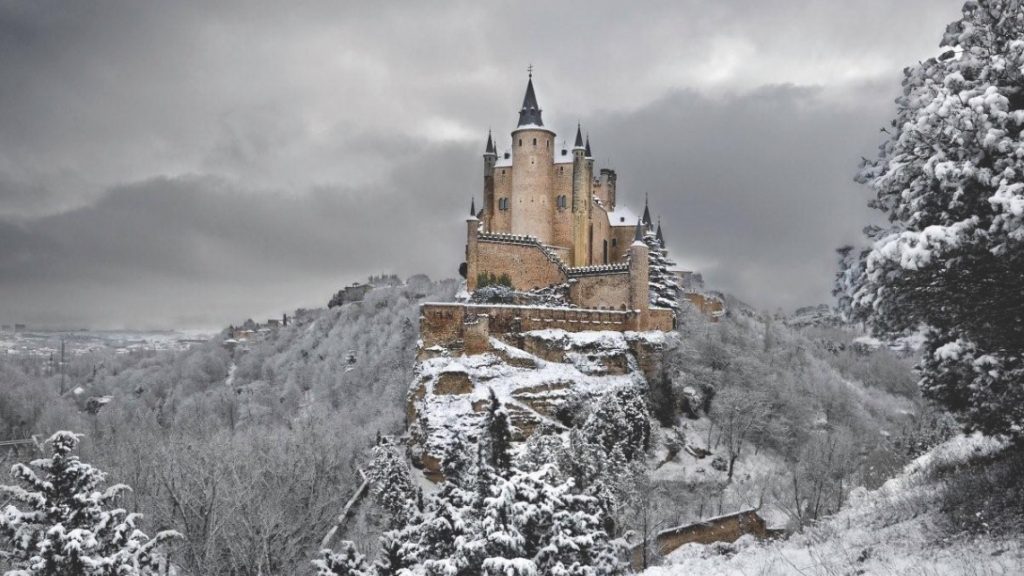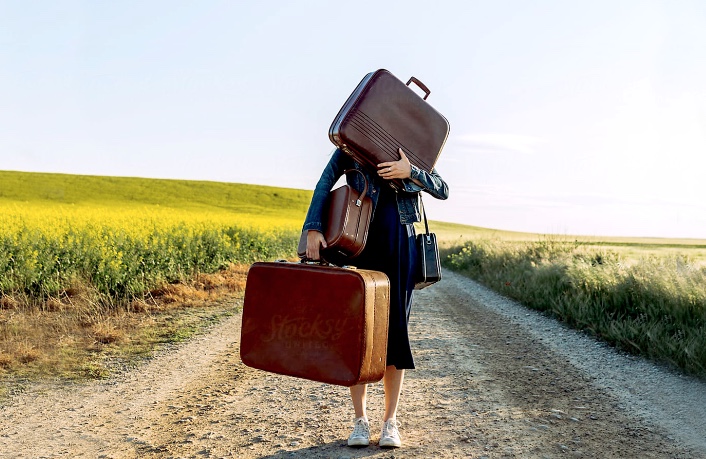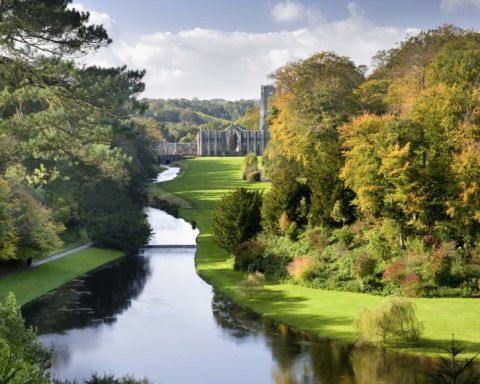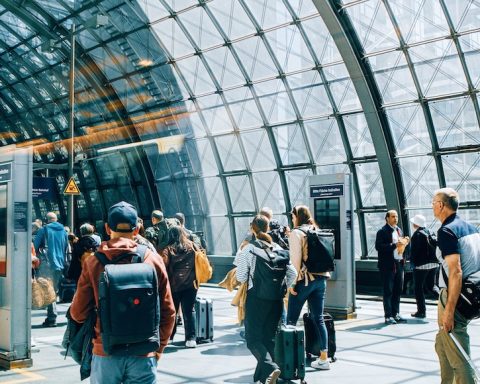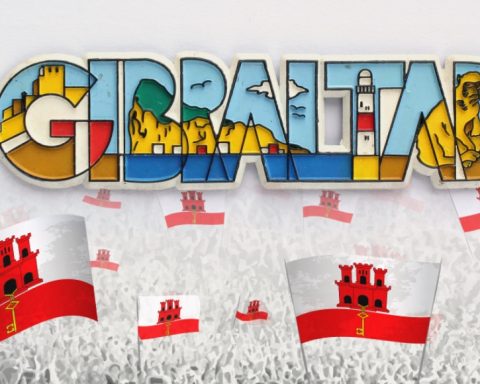The fat one
Feeding your belly and your soul in Bologna, Italy’s foodie capital.
When it comes to Italy, different cities and regions of the country are pretty universally “known” for certain things. Milan is known for fashion. Tuscany is known for wine and gorgeous countryside. Venice is known for its romantic canals. Florence for art. Rome for history.
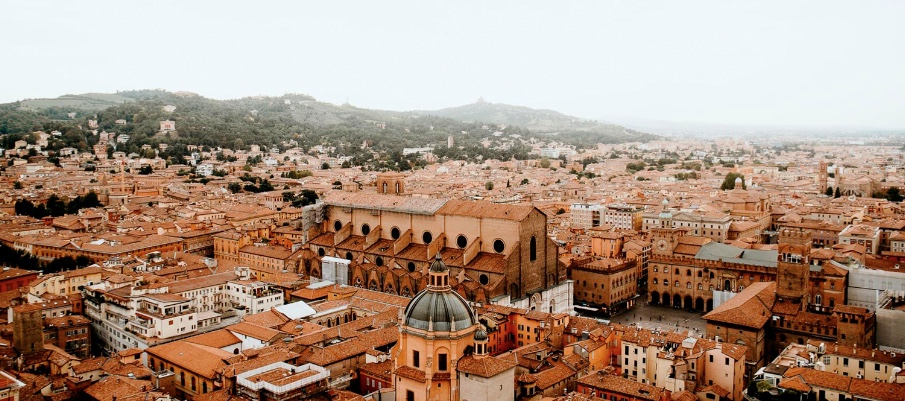
But if you love food? If you love food, you go to Emilia-Romagna.
Emilia-Romagna is a region in northern Italy known for its medieval cities and fertile lands. This part of Italy gives the world delicious things like Parma ham, the best balsamic vinegar, Parmigiano-Reggiano cheese and Ferrari.
And at the heart of Emilia-Romagna is the city of Bologna. Known as La Dotta (“the learned one” for its world-renowned university), La Grassa (“the fat one” for its delicious cuisine) and La Rossa (“the red one” for its red rooftops and leftist political views).
Bologna is one of the larger cities in Italy (7th Largest) – and even though tourism is a fast-growing industry there – it barely ranks in the top 25 cities in Italy in terms of actual tourist numbers. In 2018, more than 60 million tourists visited Italy, but only a little over 2 million of them made their way to Bologna. Another bonus is that the historic city center isn’t all that large. You can walk from one end to the other in less than 45 minutes. Meaning that you can really see (and eat) all the best things in Bologna without feeling too rushed.
Walk the Porticoes
One of Bologna’s most distinctive features are its porticoes – pretty arches that shield the streets from both the sun and rain. There are 666 archways in total (but I certainly didn’t count) built to the height of a man on horseback, and today constitute yet another of Italy’s UNESCO World Heritage sights.
Bologna Fact: the porticoes were created during Bologna’s Middle Age, when the city needed extra space for housing. By building over part of the sidewalks, the city avoided narrowing the streets, while creating extra room for living spaces.
Piazza Maggiore
Piazza Maggiore is the main square in Bologna and the heart of the historic town. Dating back to 1200, and one of the first squares in Italy built after the fall of the Roman Empire, citizens would once congregate to hear new laws and watch public executions.
Today, the Bolognese come here to eat ice cream, listen to concerts and scoff pizza in the arteries that feed of Piazza Maggiore. It’s a great place to hang out and explore the mishmash of architectural styles that have developed over the years around the square.
San Petronia Basilica
Bologna still feels like a work in progress and there’s no better way to admire the unadorned character of the city than by visiting San Petronio Church. Construction began in 1388 but after a series of complicated amendments, Pope Pius IV deemed it a pipedream and diverted funds to the university instead. As a result, San Petronio remains unfinished with the top decorated in marble and the top half simple old brick.
While the inside is plainly decorated, it contains a meridian line paved into the isle by the astronomer Giovanni Cassini in 1655. With phenomenal precision, the meridian line allowed Cassini to calculate the tilt of the earth axis and the timing of the equinoxes.
Towers of Bologna
Pisa may be more famous, but Bologna has its own leaning towers. In fact, old prints show that the city once had more than a hundred towers, as noble families would compete to build the highest structures.
17 towers remain today, the two most famous of which are the Torre Garisenda and the Torre Asinelli. Built in the 12th century, the Torre Garisenda leans even more dramatically than Pisa and is so famous throughout Italy that Dante mentions it in his Divine Comedy.
The Torre Asinelli is taller at 90 meters, and is climbable. Pay the entrance fee for a beautiful view over the city – you’ll get a first hand look at the red roofs which give Bologna its nickname La Rossa.
Taste the Best Gelato in Italy
Gelato lovers, you’re in luck. Homemade gelato in Bologna is an institution and there are several ice cream shops in town that each make delicious sorbets and ice creams.
For those who like to try quirky flavors, we spotted Gorgonzola cheese gelato and even Risotto alla Milanese gelato.
Go Food Shopping in the Quadrilatero
Bologna’s food markets are quite famous and one of the most charming sections is the Quadrilatero. Home to markets and food stalls since the Middle Ages, this grid of narrow streets south of Via Rizzoli is the place to try flaky pastries, aged cheeses, delicious charcuterie and inexpensive but fantastic wine.
Grab a little of this and that to make your own picnic! Or, have lunch at one of the many street side restaurants where you can enjoy a meal on the sidewalk tables.
Santuario della Madonna di San Luca
Saint Luke’s sanctuary is one of the most famous churches in Bologna and occupies a secluded place on its own forested hill southwest of the city center.
The best way to visit is to walk along the long roofed arcade where the annual procession marches but it’s also the most challenging way! 666 arches line the path (about 3.8 km) and you might find yourself cursing the devil as you near the home stretch.
The Motor Valley
If you’re a motorcycle or race car fan, chances are you’ve heard about the Motor Valley – the industrial district situated in Italy’s Emilia Romagna region specialized in the automotive industry. This area, mainly concentrated in Bologna, Modena, Cento and Argenta, is renowned worldwide for being the birthplace of some of the world’s leading automotive brands: Ducati, Ferrari and Lamborghini. In addition to the industrial activity, the Motor Valley is also characterized by museums, racetracks, factories and sports competitions, making it an authentic “land of engines”. Which means you can visit the Lamborghini, Ducati and Ferrari museums, racetracks and factories during your stay in Bologna!
There is so much delicious food in Bologna it can feel overwhelming. Especially if you’re there for just a short trip. This list of Bologna foods is quick guide on what to taste while visiting the area.
TAGLIATELLE AL RAGU (A.K.A. PASTA BOLOGNESE)
When it comes to Bologna food, the famous Bolognese tagliatelle al ragu is a must! And you won’t find spaghetti Bolognese in Bologna. For one, you’re in Bologna, so the sauce will simply be called “ragù.” Second, the Bolognese don’t eat spaghetti, they prefer a thicker, egg-based tagliatelle because it holds the sauce better.
RICOTTA AND FIG GELATO
Bologna has a long history with Italy’s most famous dessert, gelato. Three of Italy’s top-rated gelatarias in Bologna! But if I had to pick one flavor for you to try, it would be ricotta and fig, or “ricotta e fichi.”
TORTELLINI IN BRODO
This pasta dish is another must-taste when it comes to Bolognese Food. Bologna is known for tortellini and tortelloni, the small and large versions of a pasta dumpling that’s shaped a bit like a hat. Tortellini, is typically stuffed with seasoned ground meat and is most commonly served in a broth as a soup.
LASAGNA BOLOGNESE
Lasagna is originally from the Emilia Romagna region, of which Bologna was the center of commerce. But lasagna Bolognese is a little different that what you’re used to. It is layered with a rich and flavorful meat-based ragu, but what makes it different is that it’s typically served with green pasta.
PASSATELLI
Passatelli is one pasta you typically won’t find back home. This rustic pasta from the Emilia Romagna region is made with Parmigiano Reggiano cheese, eggs bread crumbs, and nutmeg. You can find it in a broth or served with a simple sauce.
MORTADELLA
Mortadella is a lunch meat made of cured pork and spiced with black pepper, and sometimes pistachios! Mortadella typically sliced thin and served with other charcuterie or on a piadina. It’s a cured meat you’ll see quite a lot in Bologna.
PIADINA
Piadina is a rustic Italian flatbread made with flour, lard, and salt. Some piadina can be made with olive oil too. You’ll see piadina sandwiches, and torn piadina served with meats on a charcuterie board. You can get Piadina with Nutella for breakfast or your bambino. If you want a classic then go for Mortadella and fig.
PARMIGIANO REGGIANO
The King of cheeses! Parmigiano Reggiano is a regional cheese you’re probably familiar with. It’s a hard cheese that’s usually grated on pasta, but in Bologna you’ll also find served as bite sized crumbles. Sometimes Parmigiano Reggiano is also served with a little drizzle of balsamic vinegar on top.
BALSAMIC VINEGAR
Just a short drive north of Bologna is the town of Modena, known for making balsamic vinegar, or Balsamico di Modena. This balsamic vinegar is the real deal! Balsamico di Modena is aged in wood barrels called a battery and tastes bitter sweet. You’ll often see balsamic vinegar served alongside other Bologna foods as it’s a staple at most dining room tables. The most common way to serve it is drizzled on Parmigiano Reggiano cheese.
How to spend 3 days in Dubrovnik
Day 1
Breakfast: Cele
Located right at the end of the Stradun (main street), you’ll find Cele. It’s a great spot for people watching and you’ll get quite a range of breakfast options here. I opted for the french toast, my sister went for pancakes and my mother went for eggs benedict.
AM: Walk around the city walls
Here you will find some of the best views of the city and it is a great way to get your steps in. The first thing you’ll notice about Dubrovnik is that 80% of the Old Town is made up of steps, but most of the walk around the city walls is relatively flat. The walls take between 1 – 1.5 hours to walk if you go at a leisurely pace. You can enter from Pile Gate and entry for adults is around 30 euros.
Lunch: Barba
One place that popped up a few times when looking for ‘best eats’ was the small restaurant Barba, and specifically their octopus burger in a squid ink bun. A local had also recommended this place on our tour so it was definitely worth the hype! You can’t book, but we went for lunch at 2:30pm and managed to get a table by the windowsill.
PM: Kayaking Tour
For £21, you can take a 3 hour kayaking tour that takes you around the city walls at sunset and will also take you around the ‘cursed’ island of Lokrum. You’ll also have a guide who will tell you about the history of Dubrovnik and some urban legends. You will also get 30 minutes on a private beach. Informational, relaxing and you’ll also work off that octopus burger!
Dinner:
Taj Mahal (Bosnian Food)
I definitely recommend reserving your tables in advance for dinner because most of the popular places will be fully booked on the night. Don’t let the name fool you, as Taj Mahal is actually a Bosnian restaurant! If you have any vegetarians travelling in your party then this probably isn’t the restaurant for you as their menu is very meat heavy. We opted for the ‘genghis khan plate’ which consisted of cevapi, chicken kebab, pljeskavica, suđukica, rumsteak and chicken.
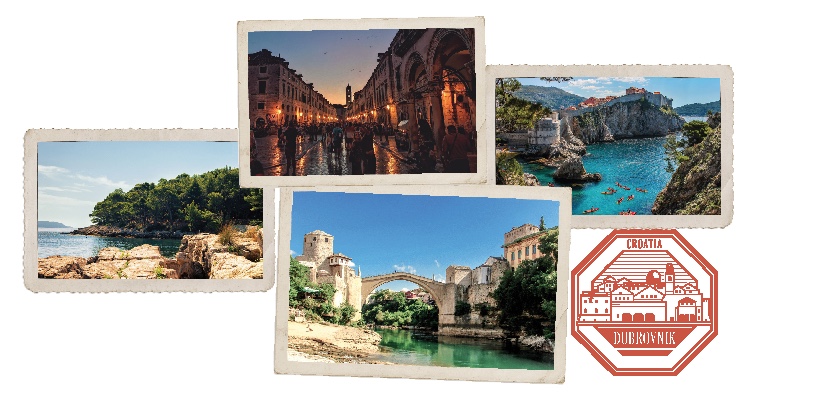
Day 2
Breakfast: SNEK
This place had a number of healthier options on their menu such as chia pudding and protein pancakes, and it cost us between £5-£10 depending on what you were eating. They also had an extensive cocktail list, so it’s a great place to come back to in the afternoon.
AM:
Game of Thrones Walking Tour
If you’re reading this travel guide, chances are you still haven’t got to Dubrovnik. Meaning there is still time to watch the show so you can experience this tour and know your Khaleesi from your Cersei. My mother and sister hadn’t seen GOT but still found the tour entertaining as the guide has plenty of pictures, funny anecdotes and non-GOT related stories about the city to share.
PM: Visit Lokrum Island
The small island of Lokrum is a 30 minute boat ride away from Dubrovnik, and here you can see some peacocks roaming, an Iron Throne replica and a lake that you can sunbathe by and swim in. You’ll likely spend 2 – 3 hours here.
DINNER:
Gradska Kavana Arsenal
The food here was delicious and moderately priced. They serve a mix of seafood, meat and pasta dishes. I had the fish stew, my mother had squid ink risotto, and my sister had the truffle and mushroom pasta.
Day 3
As I mentioned Dubrovnik is a relatively small city, which means that it gives you the chance to explore neighbouring countries. There are day trips available to Montenegro and Bosnia & Herzegovina. We decided on the latter because it’s somewhere we wouldn’t necessarily do an exclusive trip to.
Day trip to Bosnia and Herzegovina
We were picked up at 7:30am and we drove for around an hour and a half before reaching a waterfall where we had an hour of free time, and then we continued on to the city of Mostar. I didn’t have any prior knowledge of Mostar or the Bosnian war in the 90s, so it was interesting to get the perspective from our Croat tour guide, and our bosnian guide in Mostar. You definitely get the sense that people still feel very strongly and divided about what happened.
Lunch: Restaurant Sadrvan
This place was recommended to us by our guide, and a plate of meat, pita bread and chips cost us less than a fiver. They had a terrace so we got a great view of the bridge and river.
Dinner: Mex Cantina
The tour will have you back in Dubrovnik for dinner time, and if you fancy a change of cuisine then I recommend Mex Cantina. Half the menu was mexican and half was pizza, so we got a bit of everything and thoroughly enjoyed it.
10 Tips for surviving a long-haul flight
With the world opening up again and more and more countries removing entry restrictions entirely, flying out of the continent is something we can start planning without so much hesitation and anxiety. Even though I have had the chance to take a few trips recently, it has been a long time since I have done a long trip. I can however remember how gruelling they can be if you can’t sleep or if you keep checking the flight tracker on the screen to see only 15 minutes have passed by. I have an 11 hour flight coming up this month to Thailand, so I thought I’d share some of my tips for surviving a long-haul flight
1. Book an evening flight
We all know how time zones and jet lag can mess with our body clock and sometimes even get in the way of our holiday. So the best thing to do is get a flight that departs in the evening so you can have your lovely aeroplane meal, watch an hour or two of Netflix and then sleep through the night like you normally would at home.
2. Get as comfy as possible
A lot of fashion brands have pages dedicated to ‘airport attire’ because as you have probably spotted in departure lounges, a lot of people still want to look cool when they are travelling. That being said, when you are going to be spending more than 3 hours on a plane, you want to make sure your bottoms are baggy/stretchy, you have layered a t-shirt and a jumper to adjust to the plane temperatures, and you have got a pair of flip-flops in your hand luggage to switch into. On the contrary, if you are travelling in sandals make sure to keep a pair of socks handy as the plane can get chilly once everyone starts blasting the aircon.
3. Invest in a good neck pillow
Most airlines will provide a mini pillow if you are flying long-haul, but I usually use that as a rest for my lower back instead. An innovative pillow I own is the ‘FaceCradle Adjustable Pillow’ which can be altered to suit your napping preferences.
4.
Save the good Netflix shows for your trip
Even though most airlines will have in-flight entertainment, it is always a good idea to download your own shows and movies on Netflix in case you don’t like the selection, or you have bought a £150 ticket from London – Dubai and this is not even an option. If there is a binge worthy show coming up or that’s on your to-watch list, save it to watch on the plane.
5.
Take natural sleep
supplements
Melatonin tablets have been a lifesaver for me when doing long coach trips or flights. I even zoned out so hard on my 8 hour coach trip to Sydney that my head was bobbing all over the place. Melatonin is a natural sleep hormone so it is perfectly safe to carry on the plane, and it will allow you to fall asleep easier and adjust to the new timezone. Pair it with a blackout eye mask and you will be good to go.
6. Have an in-flight book club
One of my favourite airport activities is browsing through books at WHSmith, but now that I have a kindle I just take down the titles I like and purchase one on there. Mostly because it saves space (and money)! If there is a group of you travelling, find a book you can all agree on to read on the plane so you can have something else to discuss in the 10 hour journey.
7. Choose your seat wisely
We are lucky that on our upcoming trip, I prefer the window seat, my friend prefers the aisle and my other friend doesn’t mind sitting in the middle. If not I think I would have to sit apart from my friends because I can only sleep on planes if my head is leaning on the window #longneckproblems. On the other hand, my friend likes to get up frequently to walk around and use the bathroom, so the aisle seat is best for her.
8. Stay hydrated
Flying really dehydrates your skin, so it’s important to drink water, and pack a lip balm and face moisturiser in your bag for the flight. Just make sure to drink in small sips so you’re not running to the toilet every hour!
9. Avoid caffeine
We all love getting to the airport and buying an eccentric flavoured coffee from Starbucks before our flight. Depending on how hard caffeine hits you, I would leave the caffeinated drinks for when your airline serves you breakfast or else you are going to find it hard to fall asleep.
10.
Remember to stretch and keep your circulation going!
Not that there is much room for movement on a plane, but making sure that you stretch your legs and back every few hours will do wonders. Use the time whilst you are waiting in the queue for the toilet to do some lunges if the space allows for it! I also recommend taking a pair of compression tights with you for the duration of the flight, especially if you are prone to spider or varicose veins.
Personally, I enjoy flying as it really gives us time to disconnect from social media and really be present. Whether it’s with your companions, the movie you are watching, the book you are reading or even with your thoughts and emotions. Use this time to actually make it a pleasant journey for yourself!
Cunard
As one of the oldest and most respected names in cruise travel, the three ships of this heritage line offer a classic cruise experience, recreating the golden age of steamship travel. With their opulent art deco style and unique signatures of afternoon tea, grand gala evenings and White Star service, Cunard’s three Queens guarantee memorable moments at sea. The entertainment and enrichment programmes onboard are highly prized by their guests who like to return form their travels not only refreshed but also improved in some small way.
Cunard was also the first cruise line to pioneer a world voyage back in 1923 and since then no cruise line has operated more round world voyages or taken more guests on these exotic long sailings.
The iconic RMS Queen Mary plies the transatlantic route between Southampton and New York. As the world’s only ocean liner and built specifically for this purpose, she maintains a schedule of seven night crossings from spring to autumn. The transatlantic crossing is unlike any other experience at sea and one that all dedicated cruisers aspire to do at least once.
Queen Victoria spends her summers sailing from Southampton to all over Europe – the fjords, the Baltic capitals and down into the Mediterranean. In the winter she embarks on a 101 night westward circumnavigation of the world, carrying her passengers to some of the world’s most remote and exotic destinations.
Queen Elizabeth divides her time between Australasia, Japan and Alaska sailing a series of itineraries in these amazing destinations. From the majesty of the New Zealand fjords to the exotic culture of Japan during the cherry blossom season to the spectacular beauty of the Alaskan glaciers, the ship will reveal what a truly spectacular and diverse world we inhabit.
For guests choosing a luxury cruise, there is a world of choice but for those seeking a truly
iconic experience at sea, there is but one.
Cunard – The fine line.
Please contact MHB Travel Services for more details on any Cunard cruise. See details above.
Visit London
At some point or another, most Gibraltarians have wondered the streets of old London, whether for a nifty weekend break or as part of forging a career in England and the UK’s capital.
Of course, the pandemic did much to disrupt even a simple flight to Heathrow or Gatwick, but now things are easing back to a sense of normality, is it time to tread the Big Smoke’s streets once again?
London, like other global cities, almost feels like it has a life of its own. An inanimate construct of dwelling with a vibe all of its own. During the pandemic, construction continued apace in many areas, and any visit back could take you by surprise. Waterloo, for example, has gleaming new buildings where tired ones once stood.
London, is of course, massive. A core of small settlements/villages foisted together through economic necessity. Everybody knows Covent Garden, Camden and Greenwich, but there are also other wonderful nooks and crannies worth exploring.
For years, “South of the River” was a place frowned down upon, but the area from Waterloo through London Bridge and round the Thames peninsula is not only full of history, it is a delightful walk on a sunny day.
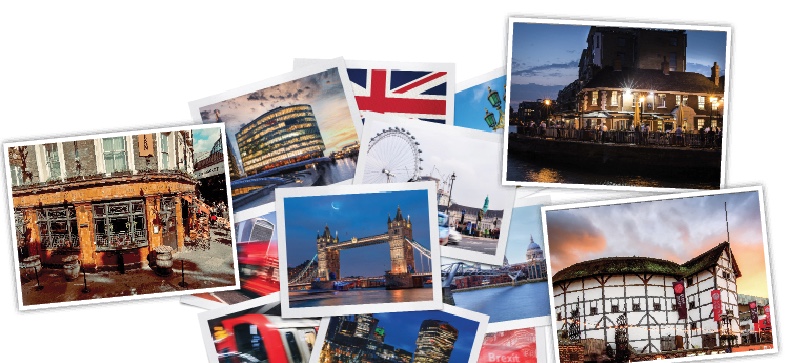
South Bank in particular has an array of quirky pubs, shops and architecture and the Thames Path is one of the best ways to see this. Take this all way round, making sure to check out the many blue plaques, or perhaps download a podcast walking tour. Fascinating gems like the Clink Prison (from which the common use of “clink” was taken) and the replica of the Golden Hind are things that not everyone knows about and well worth a visit. On the road to Tower Bridge from London Bridge, stop and relax in Potters Field Park and take in the views of moreLondon on the left and the Tower of London across the water. Shad Thames, right on the doorstep, is awash with hints of history and movie filming locations. The sense of wonder there can transport your mind back to a distant time.
Beyond Shad Thames, the postcode changes from SE1 to SE16. While the “famous” Docklands in the Isle of Dogs steals the limelight with its bold North American-style skyscrapers, Rotherhithe and Surrey Docks is a much more placid affair and is home to one of the best pubs in London, The Mayflower. It is here that the famous ship’s captain Christopher Jones lived, and he is buried in the churchyard at St Mary’s Church. Expect a rustic feel in the pub with a good atmosphere and excellent dining upstairs. The outer deck/jetty juts out over the Thames where you can take in the other historically significant ale houses on the North side of the river. Some with a darker past than most. The Captain Kidd and The Prospect of Whitby are must-sees.
Taking the tube from Rotherhithe to Wapping is a simple affair underneath the river in the Brunel-engineered Thames Tunnel. In Wapping you will find more of the olde world side of Docklands with throwbacks to previous times. One of the best places to take in more views is in Limehouse. The Narrow is operated by Gordon Ramsay, so the food quality and experience is second-to-none.
Of course, another reason to head to London is simply for shopping. Westfield in Shepherds Bush remains an excellent all-in-one experience opportunity and the mall has widened its appeal with the addition of new brands such as South African fashion boutique Kingsley Heath. The old BBC HQ over the road on Wood Lane is now home to high-end apartments and dining/bars, as well as a branch of Soho House.
London offers so much so close and it’s definitely worth exploring the road that’s less travelled in a wonderful city.
Castles & Cathedrals
IF YOU’RE STILL NOT CONFIDENT ABOUT TRAVELLING TO FAR FLUNG DESTINATIONS, THERE ARE NUMEROUS INTERESTING AND CULTURAL DESTINATIONS TO EXPLORE BY CAR.
AS PART OF A TEN DAY ROAD TRIP AROUND PORTUGAL AND SPAIN, WE LEFT PORTO AND HEADED FOR SANTIAGO DE COMPOSTELA DRIVING PAST BEAUTIFUL MOUNTAINOUS LANDSCAPES, VERDANT VALLEYS AND ALONGSIDE LUSH FORESTS. AS WE DROVE ACROSS THE RÍA DE VIGO ESTUARY WE NOTICED WHAT LOOKED FROM A DISTANCE TO BE HUNDREDS OF BARGES MOORED IN THE WATER, BUT THEY WERE IN FACT MUSSEL FARMS AND FROM THOSE BIG WOODEN PLATFORMS (BATEAS), LINES OF ROPES HUNG FROM WHICH YOUNG MUSSELS ARE SEEDED. AS WELL AS MUSSELS, GALICIA IS FAMOUS FOR ITS OYSTERS AND SCALLOPS.
Santiago de Compostela
Spain is full of walled villages, castles, churches, cathedrals and old squares and our first stop was to visit Santiago de Compostela and the majestic Romanesque style architecture of the Cathedral, one of Spain’s most iconic buildings and also one of the most important religious structures in the whole of Spain. The city, designated a UNESCO World Heritage Site in 1985, was built around the discovery of the remains of the Apostle Saint James which has led it to becoming the final point of the Camino de Santiago and the place to which pilgrims have flocked for centuries to pay their respects to St. James.
On arrival in Obradoiro Square on a Friday evening we could hear the sound of bagpipes in the distance. This is apparently a traditional welcome from a Galician busker playing the instrument under the Arco de Palacio stone archway for weary Camino pilgrims after their arduous journey.
Gazing up at the impressive western façade of the cathedral and then looking down at the smooth flagstones worn down by the pilgrims who once stood in the same place gives an understanding as to their spiritual connection with this special place that has permeated the atmosphere for more than eleven centuries.
Obradoiro Square is flanked on three sides by the Hostal de los Reyes Catolicos (now the Parador), the Palace of Rajoy currently home to the city council of Santiago and on its left side is the College of San Jeronimo.
Entry to the Cathedral is free and you will be amazed by the grandeur as you wander through from chapel to chapel, taking in the magnificence of the art and architecture, the gold and silverwork, the detailed sculpture work and the magnificent organs that sit either side in front of the high altar.
Don’t forget to look for the ‘Botafumeiro’, the famous giant incense burner hanging in the form of a pendulum from the ceiling that has been used since the Middle Ages to clean the air after the pilgrims have completed the Camino de Santiago.
Not only was this a cultural trip, but it turned into a gastro tour as well and we enjoyed an array of Galician tapas with a seafood focus. The scallop shell is the most well-known and iconic symbol associated with the Camino de Santiago, so it seemed only fitting to taste some delicious scallops with langostinos at one of the many local bars. Breakfast at the historical Casino Café, the oldest and most traditional coffee house in Santiago, once the meeting point of bourgeois and aristocrats, with its original interior from 1873 including dark wood panelling, carvings and Art Deco glass door panes, was an interesting experience. The décor took us back to a bygone age, and the contemporary giant grotesque sculptures were certainly a talking point! A delicious treat found all over the city and beyond in Galicia is Tarta de Santiago, a traditional artisan almond and lemon cake sprinkled generously with icing sugar in which the cross of St. James has been stencilled.
Moving on the next day we drove to the small but charming village of Villafranca del Bierzo where we stayed a night in the Parador, explored the historic quarter of the nearby city of Ponferrada (a twenty minute drive from our hotel) and the imposing and extraordinary Castillo de los Templarios with origins that go back to an ancient Celtic fort, but which it gets its name from the famed Knights Templar who protected the town in the 12th century. As we crossed the moat on the drawbridge and gazed out from the entrance between the two large crenelated towers, we enjoyed stunning views of the snow-capped mountains that surround the municipality.
Salamanca

Salamanca, home to Europe’s third-oldest university, is a spectacularly beautiful city and it is no wonder that the historic centre is a UNESCO heritage site. We were lucky to have an amazing panoramic view from our room at the Parador that was even better at night when the old and new Cathedrals were lit up in all their glory. The cobbled roads and streets look attractive, but comfy flat shoes are a must when you are sightseeing. Plaza Mayor, one of the largest squares in Spain, is the first place to stop for a drink, tapas and some people watching, and because it is a university city there is a great atmosphere with plenty of students bustling around amid the tourists.
Architecturally, Salamanca is full of incredible buildings carved from golden sandstone with many of them displaying intricate carvings. Look out for the frog that is carved into the stonework above the main entrance of the university, or the astronaut carving on the walls of the Catedral Nueva.
Segovia
Another city and another cathedral and castle to explore within the medieval centre of Segovia which is packed with impressive historic monuments including one of the best-preserved elevated Roman aqueducts. This time we were particularly bowled over by the beautiful Alcazar de Segovia. Built upon a large rock promontory shaped like the bow of a ship, the Castle looks as if it has stepped straight out of a fairy tale and is, in fact, said to have been Walt Disney’s inspiration for Cinderella’s Castle in Walt Disney World. To us, with its picturesque turrets, pink hued stone and enchanting spiralling towers the exterior resembled a Bavarian castle and there is no doubt that children will be enthralled as they step inside. Don’t forget to look up at the elaborately carved and painted ceilings, especially the one in the ‘Galley Room’ in the shape of an inverted ship’s hull.
There is no doubt that Spain’s cathedrals, churches and castles are veritable treasure troves full of some of the best art, sculpture, ornately adorned interiors, lavish ornamental woodwork, decorated ceilings, tapestries, and astounding gold and silver work to be found anywhere in the world… and it’s all just a drive away!
Exploring Travel Anxiety
Who among us hasn’t dreamt of travelling? Home grown gems or far away exotic locations. But travel anxiety is also very common. Some people experience a significant amount of anxiety when they travel. Those with persistent generalised anxiety and panic attacks are also prone to travel anxiety simply because travel represents change and distance from comfort. Certain people fear travel but are not completely aware of this fear because they avoid booking their ticket or come up with other excuses in order to not leave their homes.
Whatever the situation, travel anxiety makes it much considerably harder to travel, be it for work or pleasure.
It is helpful to explore the concept of travel anxiety and discover strategies and techniques as to how to reduce our fear.
Travel anxiety is unlikely to have any single specific cause. Many people experience travel anxiety their entire lives. Others develop the anxiety either because of past experiences relating to travel which were anxiety provoking. Others seem to have travel anxiety for no apparent reason at all.
You may not even know the exact reasons why your travel anxiety developed. It is possible – and important – to understand what your specific worries are. However, it isn’t always possible to know why you have those worries. Travel anxiety affects many people and it can have a disruptive influence on your life.
Pre-travel anxiety can be helped if you plan for certain scenarios. Most often stems from the “what if” aspect of travelling. While no one can plan for every possible worst-case scenario, it’s possible to have a battle plan for some of the more common ones, such as:
• What if I run out of money? I can always contact a relative or friend. I can bring a credit card for emergencies.
• What if I get lost? I can keep a paper map or guide book and my phone with me.
• What if I get sick while on the trip? I can purchase travel health insurance before I leave or be sure my insurance will cover me. Most insurance policies include access to a list of healthcare providers in different areas of the country or the world.
By preparing for scenarios like these ahead of time, you’ll see that most problems have a solution, even while traveling.
Karen Dwyer, is a neuro coach, speaker and corporate wellness trainer. Karen is best known for reversing MS and runs an award winning company providing health and well being programs in over 22 countries globally.
Karen believes ‘Anxiety can disrupt daily life anytime, but it is even more frustrating when you have a trip planned and you’d like to enjoy it along with your companions but you are stuck, full of fear and dread.
I hear a lot of clients as we approach the summer season say ‘Is it even possible to be present and enjoy the holiday?’
As soon as we hit book on that flight or hotel, one expects an excited feeling but right now, this may have an opposite effect with extra concerns about travel and the anxiety that comes with
Travel anxiety can show up as stomach pain, headache, fatigue, emotional upset, rapid breathing or shortness of breath, trembling or muscle tension/pain.
Anxiety is the body’s response to stress and stress is not a bad thing if we are in danger, it gives us the fuel we need to take some rapid actions but when this happens in daily life and if our bodies are on high alert more than we need, we need to have some strategies in place that we can practise at a moments notice.
Here are some of my most successful travel anxiety tips;
In advance of travelling:
1 – Future pace of your journey – mentally go through what it looks like on your trip. See yourself packing, in the mode of transport, arriving at your destination and feeling that all is well. Rehearse the joy in your head so that it becomes positive and comforting
2 – Download some familiar films and songs or meditations on your phone or device so you can still feel comforted and not have to worry about signals.
3 – Call and confirm all details before you leave and have a physical print out of confirmations and location. If travelling to a foreign language destination, use google translate for some local phrases and have them printed so you can easily point to them or if your phone dies you are not trying to remember or pronounce.
4 – Feeling in control plays a huge part when travelling. After possibly being out all day, being able to fully charge multiple devices, and maybe even your hair straightener/shaver etc will be important and rather than have to sacrifice one for the other, pack an extension lead with multiple sockets so you only have to use one universal plug adapter.
5 – IF you are concerned about using packed transport and germs, pack a few KN95 masks. Even just knowing you have them can be comforting. They have a 95% particle filtration system so it keeps you a lot safer from travel germs than most other masks.
6 – Do some box breathing. Breathe in for count if 4. Hold for count if 4, breathe out for count if 4, hold that for count if 4.
Do this for a minute or 2 and feel your heart rate start to regulate to go back to your own normal breathing pattern.
7 – People laugh when I tell them this but it works. If you feel an anxiety attack coming on, clench your butt cheeks. It is a pattern interrupt and will send your concentration elsewhere rather than your anxiety. Try it, might feel strange at first but scientifically prove to interrupt anxiety.’
Beyond these travel anxiety ideas, you’ll also want to focus on reducing your overall anxiety. Anxiety is a cumulative disorder. When you experience anxiety in one area of your life, it can cause more anxiety in other areas of your life. If you have anxiety on a daily basis, reducing that anxiety will provide you with a powerful advantage when it comes to managing your anxiety on the whole.
Karen Dwyer :: www.karenwyer.com
instagram.com/iamkarendwyer/
linkedin.com/in/karen-dwyer
Holiday Checklist
Passport, tickets, money, phone – these are most probably the list of things that we check we have with us before we leave home to go on holiday, and unfortunately the older we get the more we seem to have to repeat this mantra!
Once you’ve booked your flights, or whatever mode of travel you have chosen, and your accommodation, there are a few other important items that you should consider before you leave to ensure that your holiday is stress free.
Passport
It sounds obvious, but you should make sure that your passport is up to date, as well as those of anyone travelling with you. Remember that child passports don’t last as long as an adult one, so check the expiration date. Some countries refuse entry to tourists whose passports are less than six months from expiry. You should also check in advance if you need a visa for your destination and bear in mind that the time it takes to apply and receive a visa can vary, and that in some cases you can’t apply for a tourist visa more than three months before you travel.
Travel
Insurance
Checking whether you need to renew your travel insurance is another priority. It can provide extra reassurance as it may cover you if you need to cancel or change your trip before you depart, for missed or delayed flights, or for lost or stolen luggage and other belongings such as passports and cash. Most importantly, it may cover your emergency medical costs if you get sick or injured and need attention or hospitalisation while away.
Medication
It is always good to be prepared, so taking a mini travel health kit with you can often be useful if you don’t want to end up searching for a 24 hour pharmacy in a foreign country. Apart from any prescription medicines, consider the following: thermometer, over-the-counter pain relief (such as ibuprofen or paracetamol), antibiotic cream, steroid cream (such as hydrocortisone) to treat rashes, oral antihistamine (to help reduce itchiness and inflammation caused by allergies and insect bites) and anti-diarrhoea medication. Don’t forget to take sunscreen – with an SPF 30 or higher – and after-sun cream to soothe your skin after a day in the sun. Some countries have a list of controlled medicines such as painkillers, so it’s a good idea to consult the embassy website of your destination and to keep any medicine in the original packaging and bring a copy of the prescription.
Documents
A good tip is to make photocopies of all your important documents and paperwork and leave one copy at home, save an electronic copy to your phone and take another paper copy with you.
Vaccinations
Travel vaccinations can very and are totally specific to wherever you are travelling. Most vaccinations are best started 4-6 weeks before departure. Some countries still require proof of vaccination status or proof of a negative COVID-19 test, so it is best to check beforehand.
Making a holiday checklist and having an organised approach to your packing can help you enjoy a relaxing break, although for peace of mind it doesn’t do any harm to repeat that mantra!
A Quick guide – South Africa
South Africa is open again and if you’ve always dreamed of hiking Table Mountain, diving with Great Whites or ticking off the ‘Big Five’ then now might be one of the best times to visit the rainbow nation.
With barely a time zone change from the UK (South Africa is GMT+2) there’s no jetlag to speak of, and direct overnight flights with British Airways put Cape Town or Johannesburg within easy reach of a long weekend. Add to this the great exchange rate for travellers with Euros or Pounds and you’ll struggle to find a reason not to book.
In one South African holiday you can stand in a desert, climb a mountain and relax on a sandy beach backed by tropical forest. Add to this the vast abundance of wildlife to view from land, sea and air, some of the best wine in the world, and a fascinating cultural heritage to discover and you have a country that will change you forever.
The Mother City – Cape Town
Cape Town boasts an enviable coastal position and holds a reputation for its exceptional food, beautiful scenery and luxurious accommodation. It is home to a number of interesting museums and galleries including District Six and Heart of Cape Town, and you can end the day at one of the high quality restaurants at the V&A Waterfront. Surrounding Cape Town are some of the most dramatic coastlines in Africa. The rugged Cape Point Peninsula, where the Indian and Atlantic Oceans meet, lies within the Table Mountain National Park. Although raw and windswept, it’s a pleasure to explore its little tucked away beaches and coves with their spectacular views.
Stand in Mandela’s cell on Robben Island
At Nelson Mandela Gateway catamarans departs for Robben Island. It takes around half an hour and during the journey a video is shown giving an introduction to the history of the penitentiary. The prison museum includes tours, which are conducted by former inmates to give you an unrivalled insight into their harrowing personal experiences. It’s particularly fascinating to see the cell where Nelson Mandela spent much of his incarceration. He was held here between 1964 and 1982, when he was transferred to two further prisons before finally being released in 1990 after serving a total of 27 years behind bars.
View the city from the top of Table Mountain
It’s rare to find a mountain right in the middle of a city, especially one towering to 1,000 metres (over 3,500 feet) as Table Mountain does. In my opinion, no first trip to Cape Town is complete without a visit to the top — either on foot with a guide, or by hopping into the cable car that travels up and down its side. On a clear day, when the ‘table cloth’ (a bank of cloud that sometimes shrouds the summit) dissipates, the view extends across Cape Town and out past the Cape Peninsula.
Feast In the Winlands
The Winelands is a beautifully scenic area around an hour’s drive from Cape Town, with gently rolling green vineyards blanketing the Franschhoek and Stellenbosch valleys. Day trips to the Winelands are easy to really take it all in book a couple of nights. You’ll thanks us when you’re sitting on your room’s private terrace watching the sun go down over the silent vineyards with a cool glass of Cap Classique (a premium South African sparkling wine) before heading out for dinner, you will experience the tranquillity of the area.
The restaurants here are world-class and a three course meal can cost a fraction of the price of a similar dining experience in other countries. The here has a colonial French feel; it is fresh, contemporary cuisine which offers a stark contrast to the meat-heavy, traditional South African fare that you typically find in rural towns and on safari.
Once in the Winelands, if you’re planning on sampling the wines on offer, you can take the vintage wine tram that winds its way through the Franschhoek Valley. For a slightly different experience you could also join a horseback wine tasting trip, or, if you are a real wine connoisseur, take a private tour with an expert wine guide.
Safari in the Eastern Cape Game Reserves
The most famous national park in South Africa is the Kruger, but if you’re visiting Cape Town then I’d suggest the Eastern Cape Game Reserves as a great alternative. They’re easily accessible from Cape Town, have all of the Big Five animals, are non-malarial and also experience their best weather at the same time as Cape Town between October and March. During the height of summer in January and February, when Cape Town is at its warmest, we recommend avoiding the Kruger as it is rainy at this time.
Drive along the Garden Route
The Garden Route stretches between Mossel Bay and Plettenberg Bay on South Africa’s southern coast and is an area of mountain passes, coastal roads, seaside towns, and lush green landscapes.
Along the Garden Route are two national parks, Wilderness and Tsitsikamma. They boast a combination of coastal landscapes, lush forests and beautiful beaches.
Highlights include sea kayaking in the Knysna lagoon, hikes around Plettenberg Bay, surfing at J-Bay and bungy jumping at Bloukrans Bridge.
Whale watch from the clifftops.
Most whale watching requires you to wrap up warm, don waterproofs and board a boat, but in the Cape it’s an entirely different story. At Hermanus the cliffs drop steeply into the ocean, allowing the whales to come within 30 metres of the shore.
The migrating southern right whales use the calm waters and steep shores of False Bay and Walker Bay as sheltered locations to calve and rest up before heading south toward Antarctica with their young. The whales can be seen between of June and October in this area, however September and October are the optimum months to visit.
Spot the Big Five in Kruger National Park safari
The Kruger National Park has a well-deserved reputation for offering an outstanding South African safari. The park is simply huge, covering over 20,000 square kilometres and supporting 147 species of mammal (including the Big Five) and over 500 species of bird.
When deciding where to base yourself for your safari you can choose from a huge variety of accommodation options ranging from simple self-catering chalets to some of the most opulent and exclusive safari lodges in Africa.
Before booking your safari to South Africa, it is important to think about the sort of experience that you would enjoy. Some lodges focus on romantic seclusion with private game drive vehicles and dining, whilst others are more sociable, allowing you to share a vehicle with other guests and dine with them in the evenings.
For groups of four to six people it is possible to hire a private safari house, which comes complete with your very own private pool, vehicle and expert guide.
Which ever way you decide to go you will be guaranteed holiday of a life time and memories that will never fade.


